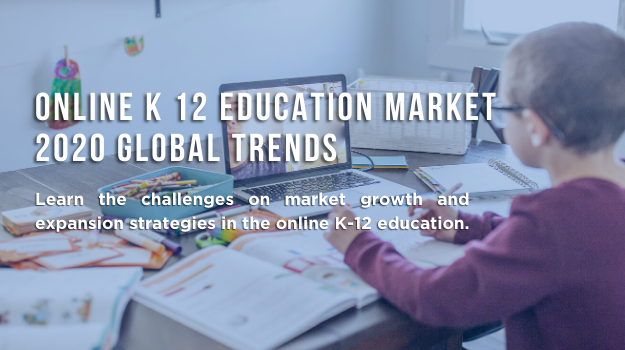
Introduction
From 2020 to 2025, the K-12 education market is projected to expand at a CAGR of 10.5 percent during the forecast period.
The demand is powered by schools moving from the conventional blackboard approach to integrating into learning environments with smart technologies. The learning movement includes a wide variety of practices, instruments, and programs to enhance students’ educational outcomes.
The need for STEM education has been fueled by rising work opportunities in the science, technology, engineering, and mathematics (STEM) sectors. Qualified for entry to higher education institutions are candidates who successfully score high grades in competitive exams. Therefore, in schools worldwide, parents, teachers, and diverse audiences are putting greater focus on simple STEM education.
Technical Advancements
Technical advancements have expanded the popularity of learning analytics in the educational sector, and big data use. The implementation of learning analytics aims to provide a customized method of learning for educational institutions. Also, robotics can support homeschooled or instructing children in fields where there is a limited supply of human experts.
For example, English-speaking robots were launched in 2019 to fulfill this purpose in some 500 Japanese classrooms. In South Korea, where trained English teachers are scarce, a robot, Robosem, teaches English.
Business development is projected to be guided by government policies to increase education quality at the K-12 level around the world. For example, Saudi Arabia is targeting to increase private education share to 25 percent by 2030 with its “Vision 2030”.
To do this in 2017, the government also allowed 100% foreign company ownership to steadily loosen ownership limits on foreign companies that had previously been forced to set up joint ventures with local partners. That will draw the country’s global private K-12 suppliers.
The global education sector was also affected by the latest COVID-19 epidemic. It is expected that the pandemic will have significant economic effects, and it will also have a catastrophic impact on global education. According to UNESCO’s latest estimates, as of March 23, 2020, 1.3 billion children worldwide have been unable to attend colleges.
Online Learning to Drive the Market Growth
Technology applications provide companies with well-organized business resource planning programs that help staff members develop enhanced classes and skillfully handle classrooms and schools.
Digital networks for education build interactive classrooms, allowing educators to manage a broad audience without any budget restrictions. Virtual education provides students with their teachers with more one-on-one time. And most online services for K-12 are cheap or even tuition-free.
Mobile devices are growing due to their portability and flexibility in consuming information and social interactions for smart learning. Students and teachers often interact quickly and efficiently to receive input with quick clicks. With the new ICT innovations, the learning outcomes for both ability and expertise can be smartly calculated and observed.
Asia-Pacific to Have Significant Market Share
The K-12 education sector in the Asia-Pacific region is increasing steadily due to the acceptance of online learning by millions of learners. Several nations are bringing online their entire K-12 program. Countries such as China, India, Indonesia, Malaysia, among others, are mainly driving growth.
Under this program, children will have the ability to practice with different instruments and equipment to understand STEM’s advanced and straightforward principles (Science, Technology, Engineering, and Math). ATL students will be fitted with teaching and learning kits and science tools consisting of robots, electronics, open-source microcontroller boards, 3D printer sensors, and computers.
Virtual education is very distinct from the conventional education concept, which requires a schoolhouse, a classroom with rows of chairs, and a teacher standing next to a chalkboard. Virtual education provides students with their teachers with more one-on-one time.
In the United States, the cumulative primary and secondary education process is known as K-12 education. Many school districts and states in the US are moving to online learning to enhance educational outcomes. In the new millennium, the K-12 standard of online learning has evolved from an innovation to a revolution.
